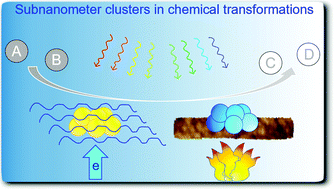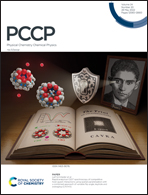Exploring the materials space in the smallest particle size range: from heterogeneous catalysis to electrocatalysis and photocatalysis
Abstract
Ultrasmall clusters of subnanometer size can possess unique and even unexpected physical and chemical propensities which make them interesting in various fields of basic science and for potential applications, such as catalysis, photocatalysis, electrocatalysis, and optical and chemical sensors, just to name a few examples. These small particles often offer the tunability of their performance in an atom-by-atom fashion and an economic atom-efficient use of the metal loading. In this paper we review recent progress in the characterization and theory of well-defined subnanometer clusters in catalytic processes, and discuss their optical properties and stability, along with the potential of the size-selected clusters for the understanding of catalytic processes and for the development of new classes of catalysts.

- This article is part of the themed collections: Stability and properties of new-generation metal and metal-oxide clusters down to subnanometer scale, 2022 PCCP HOT Articles and PCCP Perspectives


 Please wait while we load your content...
Please wait while we load your content...